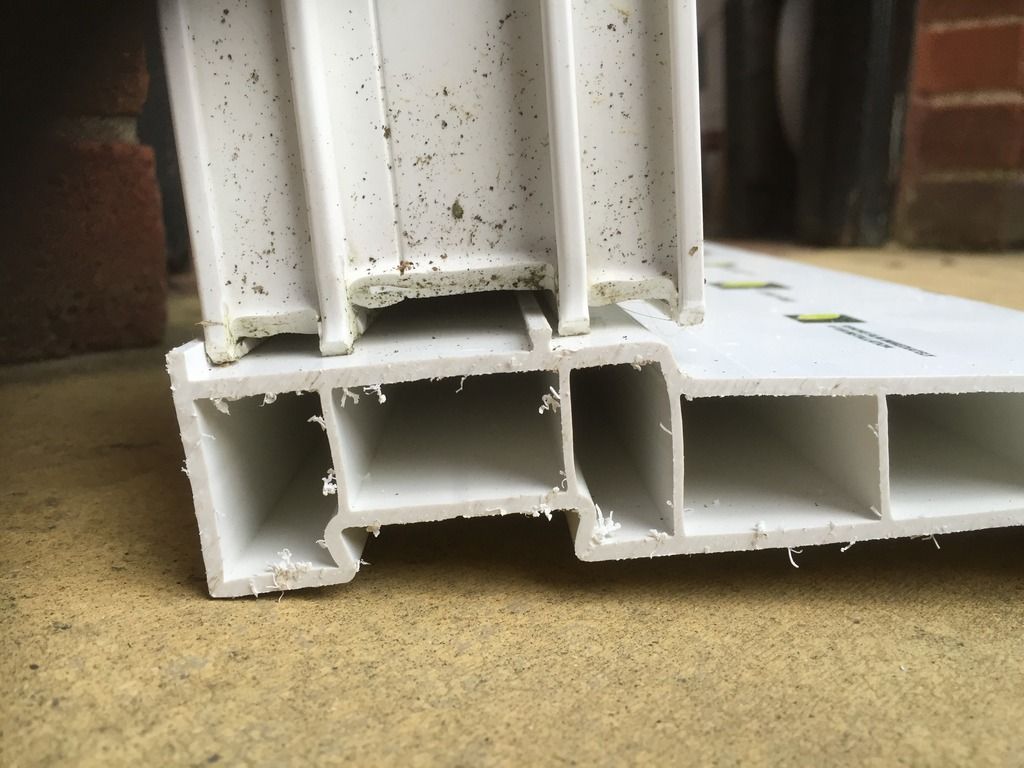I will start again, I haven't the time where we left or what i or others suggested. But I will use that photo by Gazman and go from there.
Look at the picture, what you see is two sections of the window, and they are seperate sections, one at the bottom is PVC sill extrusion, the other on top is the pvc window frame, and what we are not seeing is the actual window and openings etc, and they are most probably irrelevant and not from water is seeping through.
So for now assume it is perfect with perfect rubber seal around opening sections to window frame.
So now you look at that picture with deep sight, keep watching it, keep on looking at it, and think hard if you were water, and how could you get inside that house!
So now I found two or three possibilities where water can get in
1. From the edges of the cill if the fitters did not use any frame sealant or mastic so any water splashing on window sill can seep in the joint between the sill and the masonry work (brick wall or plastered window opening) all joints where plastic meets masonry needs a small bead of frame sealant.
2. So if you seal the above and water still seems to seep in, now we look again, there is another possibility, what this Photo does not show us is the front end of the extruded sill, so here the water can roll down its slope, and run along its bottom surface, and enter the wall through capillary, water is funny liquid, it can sometimes defy gravity, because it has another property called surface tension, if the surface tension is greater than the force of gravity, water will remain clinging to things upside down, or run along the bottom of the sill,
So Architects and building engineers overcame this problem by using a grove to the underside of the sills, or a protruding lip in PVC extrusion, check that yours have this water break lip, or in concrete, or stone sills they have a grove to break water fall, if you have a grove to its underside running along the lip of the sill, this will break water's surface tension and then water will drip down rather than climb up, into the grove to get to the other side of the grove, which requires Energy, but if you have no grove to break the water tension, it will run along underside of the sill and enter the wall to sill joint, and capillary action will start drawing water into the masonry if there is no joint sealant between the sill and the masonry wall .
3. iF your sill has no grove, don't worry, you need not make a grove that can weaken your sill, instead you can add a thin bead of plastic rod, failing that use PVC 3 core mains cable as a bead, preferably white, stick it under your sill using some silicone bead, whiles setting you can hold it in place with masking tape patches. when set remove masking tape.
4. seal all joints between window frame, sill, and masonry work.
5. The only other weak point where water can come from is the window frame resting on top of the sill extrusion, you can also seal this from outside with a bead of white silicone,
you don't need to have any air flowing through it, or there is no reason for there to be any untight air space.
Good luck and save you £600 or £800, and have a good holiday instead.


